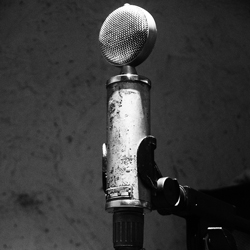;
While selecting a power amplifier for a specific loudspeaker is often rather easy, selecting a preamp for a specific microphone is not.
Terminology is the problem.
At one end we find power amplifier and loudspeaker manufacturers speaking the same language, or at least using the same vocabulary.
Power amps are rated in watts and ohms, while loudspeakers are rated in ohms with a maximum power handling capability stated in watts.
Unfortunately, at the other end, microphone and preamp manufacturers do not speak the same language or use the same vocabulary. One is rated using sound pressure level (SPL) while the other rates itself in volts (dBu).
This note explains how to convert microphone specifications into preamp specifications, making selection and comparison easier. No math is involved since handy look-up tables do the math for you. Key terminology is explained and cross-referenced.
Worrisome Things
Buyer’s guides will generally list microphones that range anywhere in price from $50 to $8,000, and microphone preamplifiers from $150 to $4,500.
Whether you spend $200 or $12,500 for one microphone and a preamp to go with it, it pays to make sure they are compatible. Luckily, knowing how to do this skillfully depends not on your budget—but rather on this free tech-note.
Selecting the right preamp for a given mic, or conversely selecting the right mic for a given preamp, involves two major things (and a bunch of minor ones):
• Input headroom—Do you have enough?
• Noise—What will the preamp add to your mic?
You need to determine whether the microphone under worst-case conditions is going to overload the preamp input stage and whether the preamp is going to materially degrade the noise performance of the microphone.
Actually, microphones have few specifications. Most are sold on sound, reputation and price. Specifications rarely enter into it. Even so, enough exist to make the right decision.
Other issues include the proper input impedance. Recently the trend is toward higher input impedances than classic designs, with many now rated 2 kilohms and higher.
Since the connected impedance (i.e., mic plugged into the preamp) determines the noise performance, and the microphones are low impedance (150 – 200 ohms) then there is no noise penalty for providing higher input impedances.
Another thing to examine is phantom power. Is it provided? Do you need it?
Is it the correct voltage, and does it source enough current for your microphone? This is an area where you need to make informed decisions.
There is a huge myth circulating that microphones sound better running from 48 volts, as opposed to, say, 12 volts, or that you can increase the dynamic range of a microphone by using higher phantom power.
For the overwhelming majority of microphones both of these beliefs are false. Most condenser microphones require phantom power in the range of 12-48 VDC, with many extending the range to 9-52 VDC, leaving only a very few that actually require just 48 VDC.
The reason is that internally most designs use some form of current source to drive a low voltage zener (usually 5 volts; sometimes higher) which determines the polarization voltage and powers the electronics.
The significance is that neither runs off the raw phantom power, they both are powered from a fixed and regulated low voltage source inside the mic.
Increasing the phantom power voltage is never seen by the microphone element or electronics, it only increases the voltage across the current source. But there are exceptions, so check the manufacturer, and don’t make assumptions based on hearsay.
Final selection details involve checking that the preamp’s gain range is enough for your use, that there are overload indicators or metering to help in set up, that the plumbing is compatible with your wiring needs, and that the color doesn’t clash with your tour jacket.





















